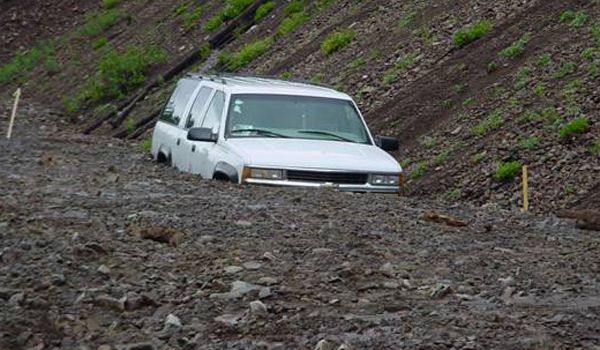American Scientists Unsure What Caused Mudslide in Mexico

A mudslide that reportedly killed seven people and buried as many as 300 homes in a rural Mexican village may be linked to the relentless rainfall the region has recently experienced, although American geologists cannot confirm what led to the devastating mudslide.
"Without going down there and looking at the site, it's hard to tell exactly what caused the mudslide," said Lynn Highland, a geographer at the U.S. Geological Survey National Landslide Center.
Rescue workers and police are struggling to reach the village of the Santa Maria Tlahuitoltepec in northern Oaxaca, Mexico, as continuing heavy rains have caused waves of mud and stones to block the roads, according to news reports. About 100 people are currently confirmed missing, Oaxaca state civil protection operations coordinator Luis Marin told news sources.
Last week, Tropical Storm Matthew's downpour caused heavy flooding in much of Oaxaca, saturating the land and possibly triggering the mudslide or at least contributing to the soil's instability. The hillside collapsed early Tuesday morning, while most of the unsuspecting people in the village were still asleep, according to news reports.
In fact, as of today (Sept. 28) many are still missing and the number of victims buried by the debris could rise up to 1,000, Oaxaca Gov. Ulises Ruiz told Mexican news sources.
A sub-category of landslides , mudslides are rivers of rock, earth and other debris that are saturated with water, according to the USGS. Mudslides can be slow- or fast-moving, though they tend to grow in size and momentum as they pick up trees, boulders, cars and other materials.
Mudslides can occur at any time of the year, regardless of weather conditions, according to the Federal Emergency Management Agency (FEMA). And they can strike without any prior warning signs, making for a dangerous phenomenon.
Sign up for the Live Science daily newsletter now
Get the world’s most fascinating discoveries delivered straight to your inbox.
Earthquakes, volcanic eruptions , changes in groundwater levels, alternate freezing and thawing, and the steepening of slopes by erosion all contribute to mudslides. Prolonged, intense precipitation and run-off can also create the conditions ripe for a mudslide, Highland told Life's Little Mysteries.
Because different areas of land have different soil compositions, as well as varying slopes and geographic characteristics, it is difficult to determine how prone a place is to mudslides and therefore near impossible to predict when one will hit. However, they are known to occur in areas previously hit by mudslides, according to the USGS.
- What's the Deadliest Natural Phenomenon?
- 7 Ways the Earth Changes in the Blink of an Eye
- What Causes Mudslides?
Got a question? Email it to Life's Little Mysteries and we'll try to answer it. Due to the volume of questions, we unfortunately can't reply individually, but we will publish answers to the most intriguing questions, so check back soon.












